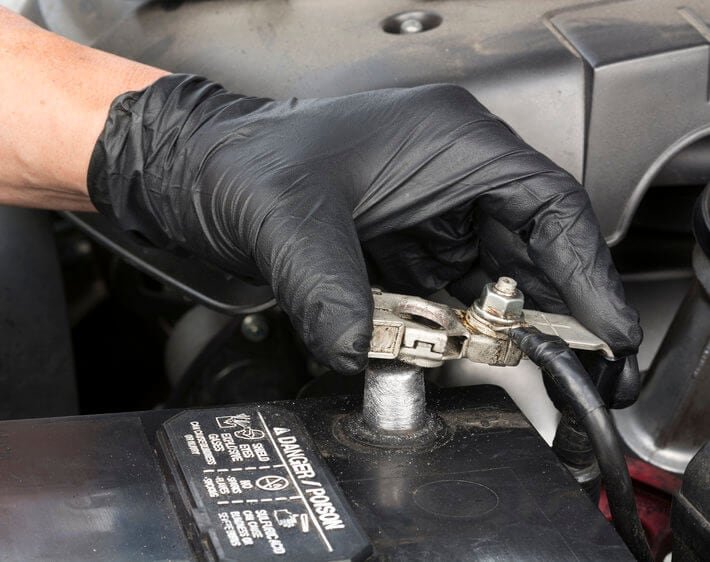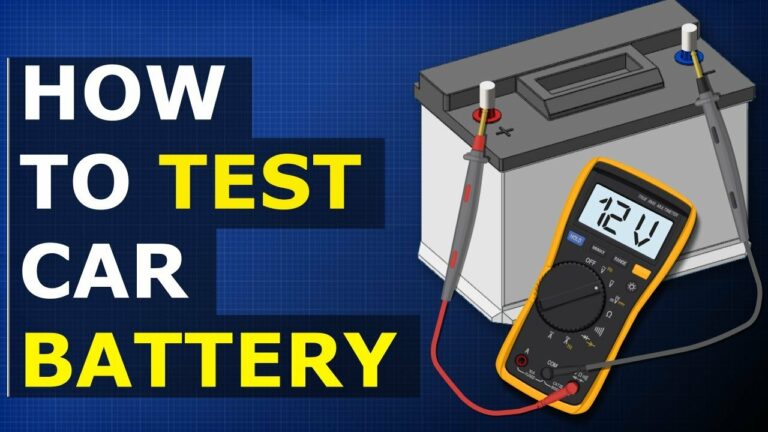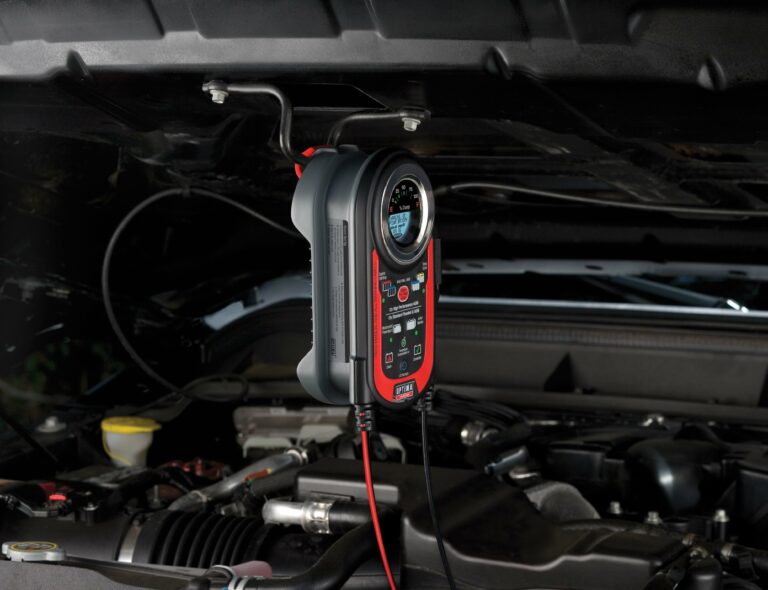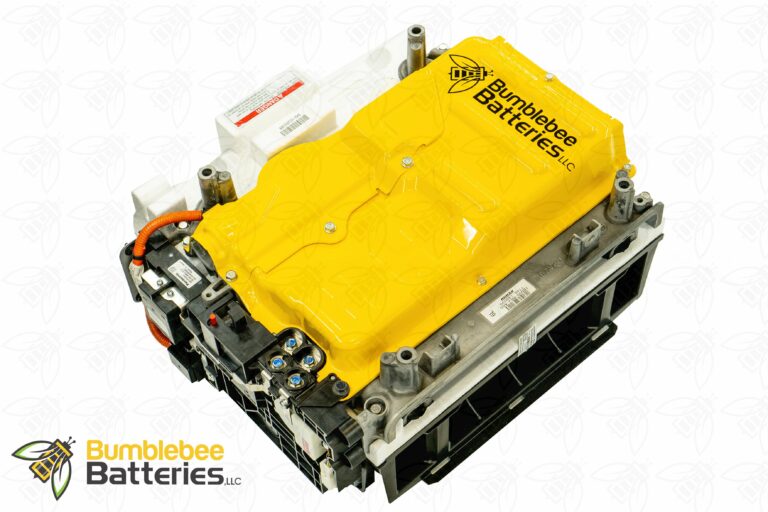How To Clean Car Battery Terminals
Do you have trouble dealing with dirty car battery terminals? Are you looking for an effective way to clean them? Don’t worry anymore! Keeping car battery terminals clean is crucial not only for ensuring a solid electrical connection but also for extending the battery’s lifespan.
This article will provide you with straightforward yet effective methods to get your car battery terminals shining like new. No need to fret or shell out money for professional services – I’ve got you covered! Let’s delve into the grime and find out the most efficient method to clean car battery terminals!
How to Clean Car Battery Terminals:
Maintaining clean car battery terminals is crucial for extending the battery’s lifespan and avoiding electrical problems. Corrosion buildup on terminals can impede electricity flow and impact the vehicle’s performance.
By regularly cleaning the terminals, you can ensure efficient electrical conductivity and prevent any potential issues. This article will provide a detailed guide on effectively cleaning car battery terminals.
Gather the Necessary Tools and Materials:
Before getting started, gather the following tools and materials:
- Baking soda
- Water
- Wire brush or old toothbrush
- Protective gloves
- Safety glasses
- Adjustable wrench or battery terminal wrench
- Rag or paper towels
- Battery terminal grease or petroleum jelly
Safety First!
When working with car batteries, it’s crucial to prioritize safety. Follow these safety precautions before cleaning the battery terminals:
- Put on protective gloves and safety glasses to protect your hands and eyes from any potential mishaps.
- Ensure the engine is turned off and remove the key from the ignition.
- Locate the battery in your car. Typically, it can be found under the hood, although some cars may have the battery in the trunk or under the seat.
- If you come across any cracks, leaks, or damage to the battery casing, it’s recommended to seek professional assistance.
Disconnect the Battery
To clean the battery terminals effectively, we need to disconnect the battery properly. Follow these steps:
- Identify the battery terminals. The positive terminal is usually marked with a (+) sign or a red cover, and the negative terminal with a (-) sign or a black cover. Make sure you can differentiate between the two.
- Using an adjustable wrench or battery terminal wrench, loosen the nut or bolt on the negative terminal. In most cases, turning counterclockwise will loosen the connection.
- Once the negative terminal is loose, carefully remove the cable from the terminal and secure it away from the battery to prevent accidental contact.
- Repeat the same procedure for the positive terminal, ensuring that the cables are kept separate and away from the negative terminal.
Inspect the Battery Terminals
Before cleaning the terminals, inspect them for any signs of corrosion, which appears as a white or bluish powdery substance. Corrosion can hinder the electrical connection and affect battery performance. Here’s what to do:
- Visually examine the terminals and cables for any corrosion or build-up.
- If you notice significant corrosion or deposits, it might be necessary to remove the cables completely for a thorough cleaning.
- It’s essential to address any corrosion issues promptly, as they can lead to electrical problems or even battery failure.
Create a Baking Soda Cleaning Solution
Baking soda is an effective and easily accessible household item that can help remove corrosion from battery terminals. Here’s how to create a cleaning solution:
- In a small container, mix a tablespoon of baking soda with enough water to form a paste-like consistency.
- Ensure the baking soda is fully dissolved in the water.
Clean the Battery Terminals
Now that you have your cleaning solution ready, it’s time to clean the battery terminals. Follow these steps:
- Dip the wire brush or old toothbrush into the baking soda solution.
- Gently scrub the battery terminals and cable connectors with the brush to remove any corrosion or build-up.
- Pay attention to the hard-to-reach areas and ensure a thorough cleaning.
- If necessary, use a rag or paper towels to wipe away any excess cleaning solution and corrosion.
Rinse and Dry the Terminals
After cleaning the terminals, it’s crucial to rinse off any residue and ensure they are completely dry before reconnection. Follow these steps:
- Using a damp cloth or sponge, rinse the terminals with clean water.
- Make sure to remove any remaining baking soda solution from the terminals and connectors.
- Dry the terminals and connectors thoroughly with a clean rag or allow them to air-dry completely.
Apply Battery Terminal Grease
To prevent future corrosion and ensure a good electrical connection, applying a thin layer of battery terminal grease or petroleum jelly is recommended. Here’s what to do:
- Take a small amount of battery terminal grease or petroleum jelly on your finger or a clean cloth.
- Apply the grease to the battery terminals and cable connectors, ensuring an even and thin coating.
- The grease will act as a protective barrier, preventing moisture and corrosion from forming on the terminals.
Reconnect the Battery
Now that you have cleaned the battery terminals, it’s time to reconnect the battery. Follow these steps:
- Begin by positioning the positive cable (red) onto the positive terminal.
- Tighten the nut or bolt on the positive terminal using the adjustable wrench or battery terminal wrench. Make sure it is secure but avoid over-tightening.
- Repeat the same process for the negative cable (black) and the negative terminal.
- Once both terminals are securely connected, give them a gentle tug to ensure they are firmly attached.
Perform a Test Start
After reconnecting the battery, it’s essential to perform a test start to ensure everything is functioning correctly. Here’s what to do:
- Return the key to the ignition and start the engine.
- If the engine starts smoothly and without any issues, it indicates a successful reconnection.
- If you encounter any problems or the engine doesn’t start, double-check the connections and seek professional assistance if needed.
Maintain Regular Cleaning Schedule
To keep your battery terminals in excellent condition, it’s important to maintain a regular cleaning schedule. Here are some tips:
- Inspect the battery terminals and cables for any signs of corrosion or build-up at least once a month.
- If you notice any corrosion, follow the cleaning steps outlined above to remove it promptly.
- Consider cleaning the battery terminals during routine car maintenance, such as oil changes, to ensure they stay in optimal condition.
- Regularly cleaning the battery terminals will help prevent electrical issues and extend the life of your car battery.
Remember, if you are unsure about any step or encounter difficulties during the process, it’s always best to consult a professional mechanic. Proper maintenance of your car battery terminals will not only save you from potential headaches but also contribute to the overall performance and reliability of your vehicle.
How to clean car battery terminals in 30 seconds.
Faqs for Car Battery Terminals:
You can use a mixture of baking soda and water to clean car battery terminals. Simply mix a tablespoon of baking soda with a cup of water to create a cleaning solution. This mixture is effective in removing corrosion and dirt from the terminals.
Cleaning car battery terminals regularly is important because it helps maintain a proper electrical connection between the battery and the vehicle’s electrical system. Corrosion and dirt buildup on the terminals can interfere with the flow of electricity, leading to starting problems or even battery failure.
It is recommended to clean car battery terminals at least once a year or whenever you notice signs of corrosion or dirt buildup. By maintaining clean terminals, you can ensure a reliable electrical connection and extend the life of your battery.
Yes, there are a few safety precautions to keep in mind when cleaning car battery terminals. Always wear gloves and eye protection to prevent any contact with corrosive materials or chemicals. Make sure the engine is turned off before disconnecting the battery cables. Additionally, be careful not to touch both battery terminals simultaneously, as it can create a short circuit.
Yes, a wire brush is a suitable tool for cleaning car battery terminals. It helps remove corrosion and dirt effectively. However, make sure to use a wire brush specifically designed for battery terminals, as other types of brushes may cause damage.
Final Thoughts
Regularly cleaning your car battery terminals is crucial for maintaining its performance and extending its lifespan. By following a few simple steps, you can keep your battery terminals clean and prevent corrosion buildup. Start by disconnecting the battery, removing the terminals, and cleaning them with a mixture of baking soda and water. Use a wire brush or toothbrush to scrub away any dirt or corrosion. Rinse with water and dry thoroughly before reconnecting the terminals. Regular cleaning of your car battery terminals will ensure efficient electrical connections and keep your vehicle running smoothly.




